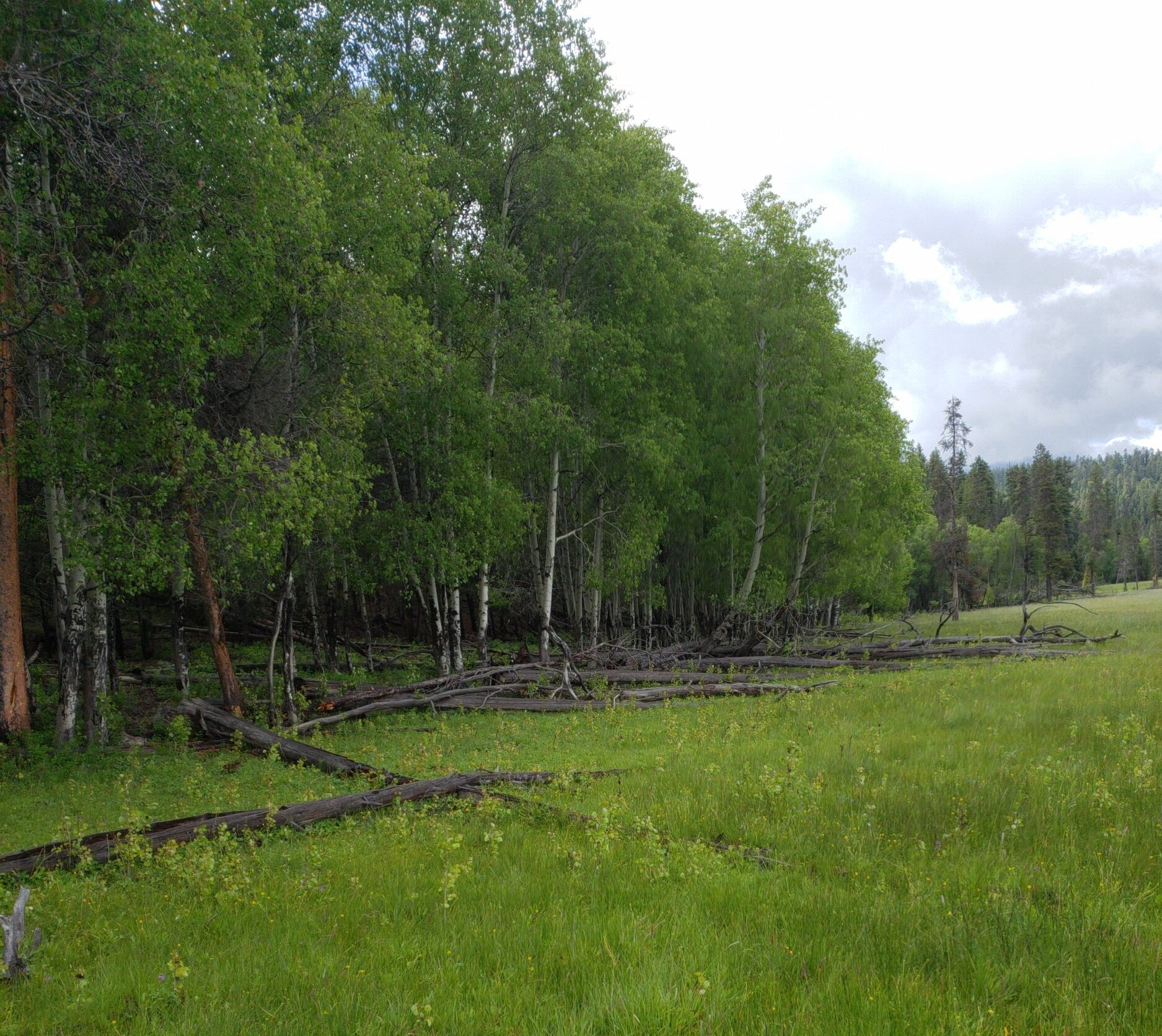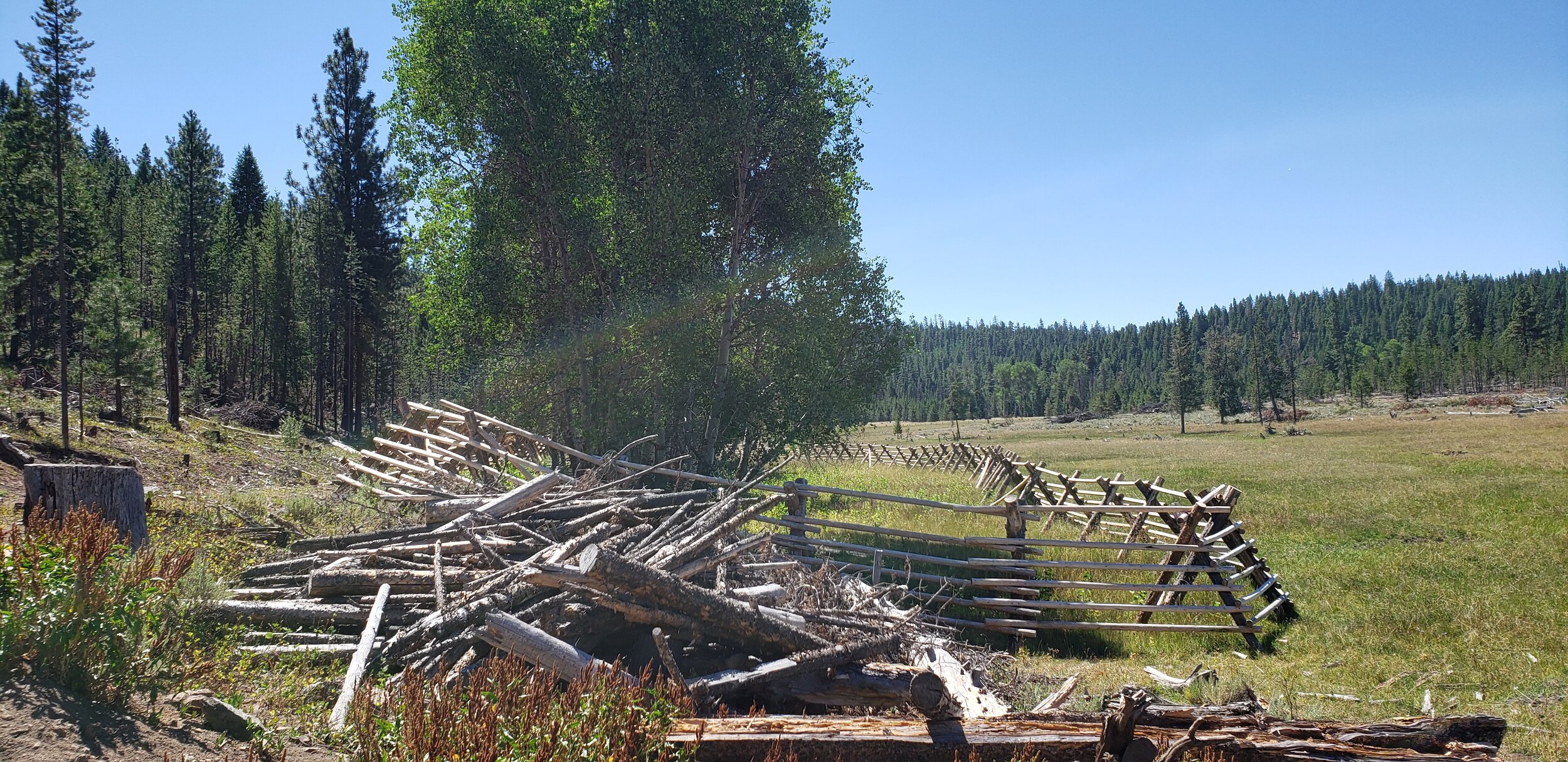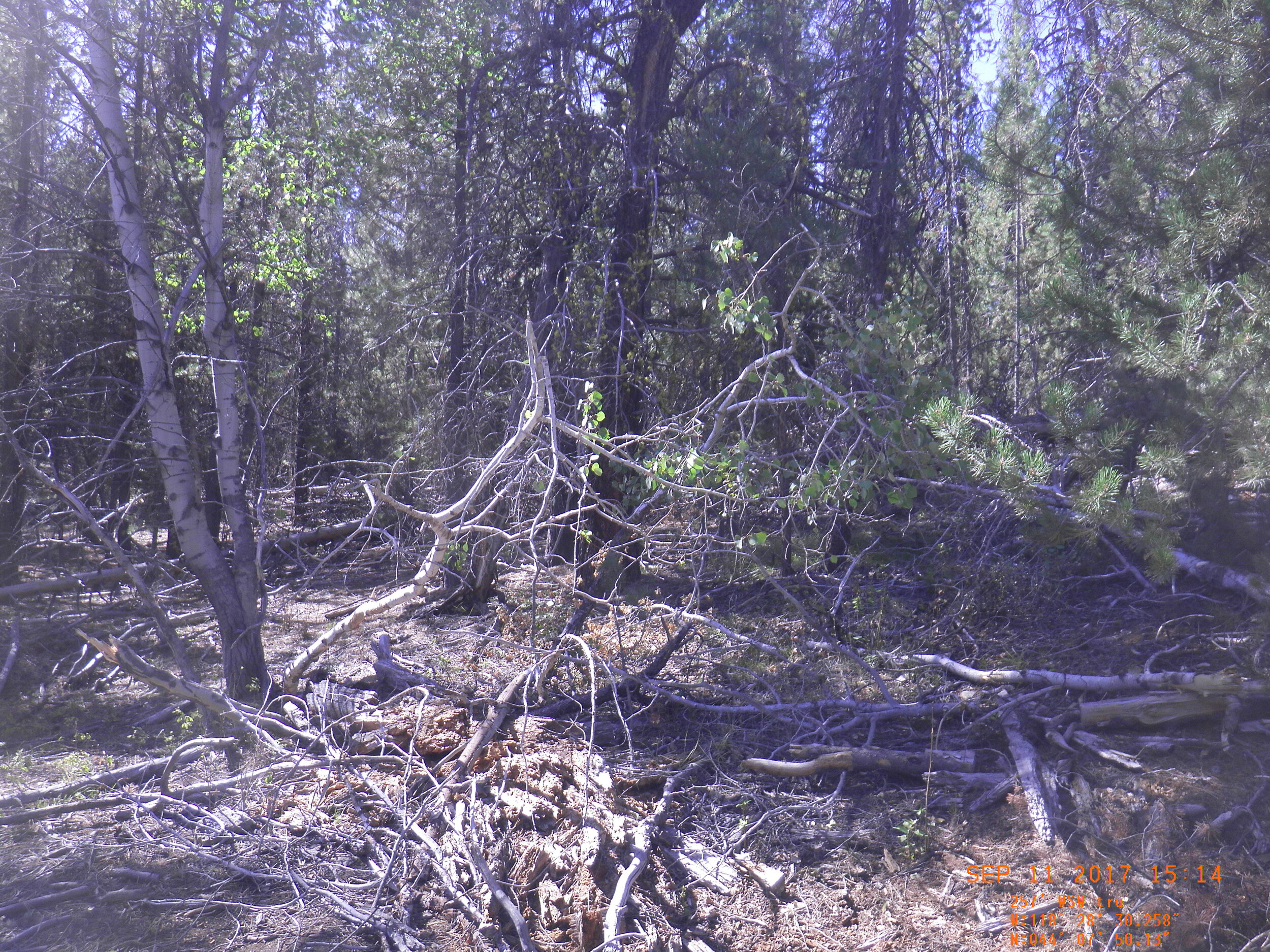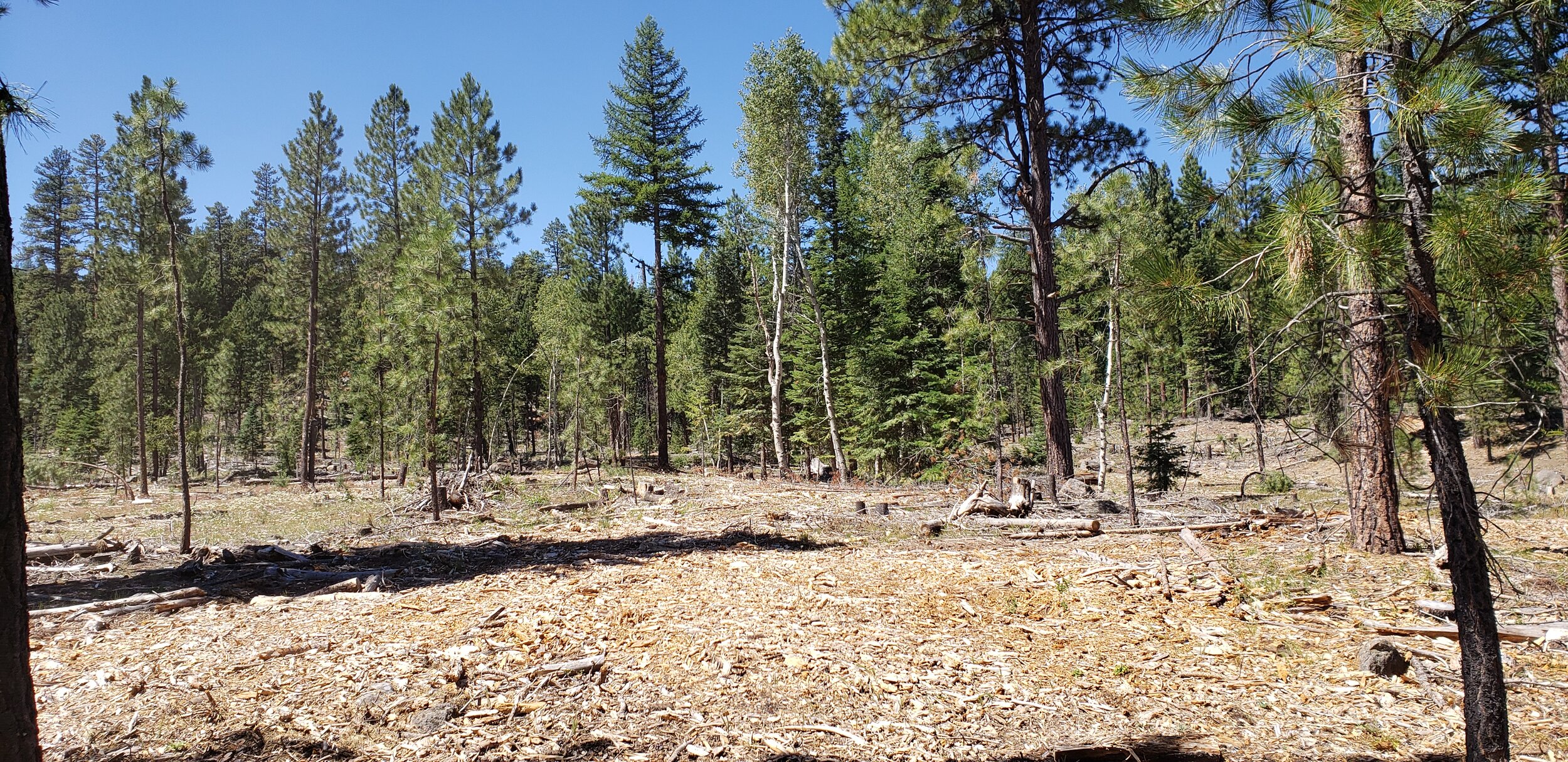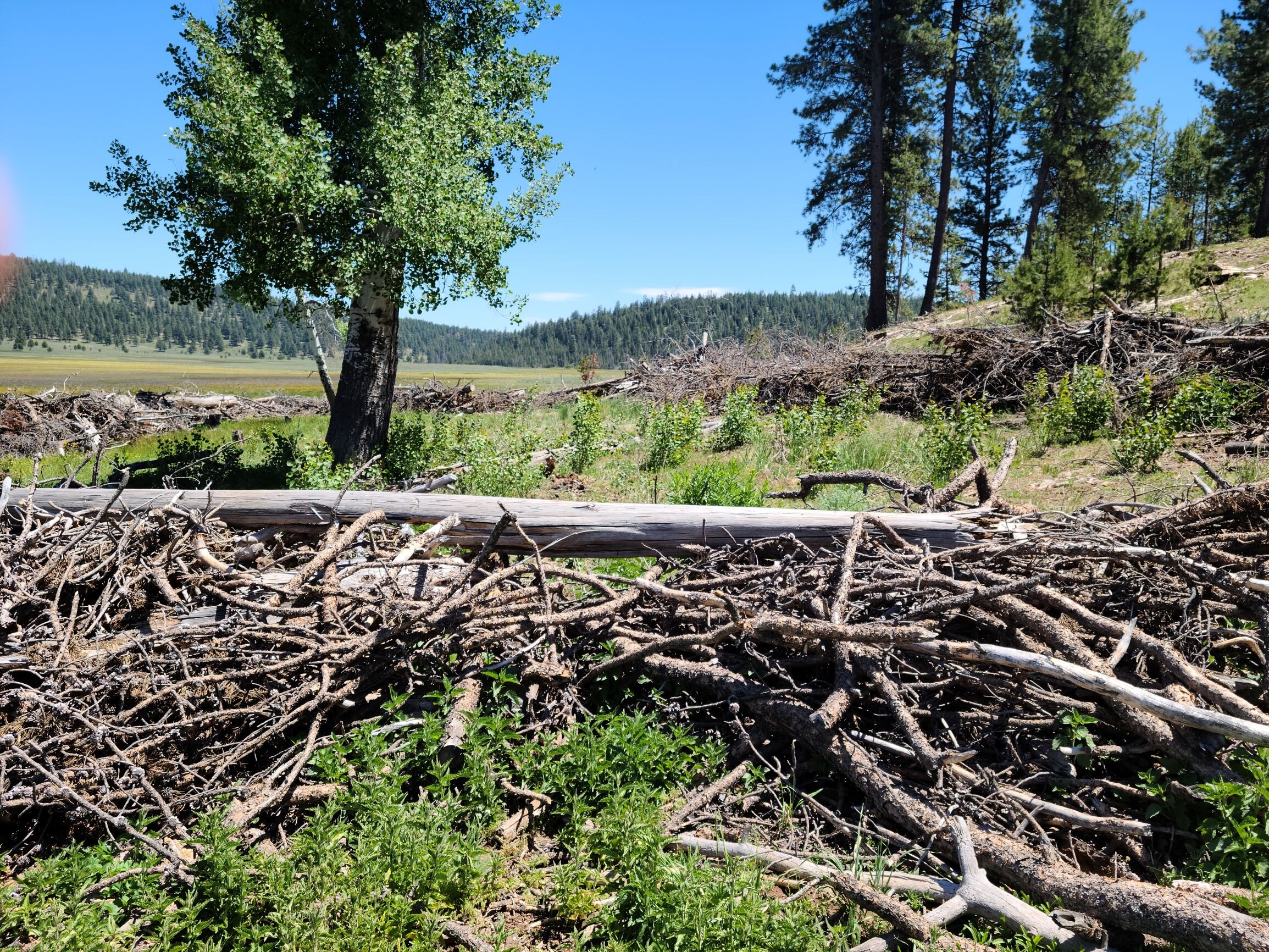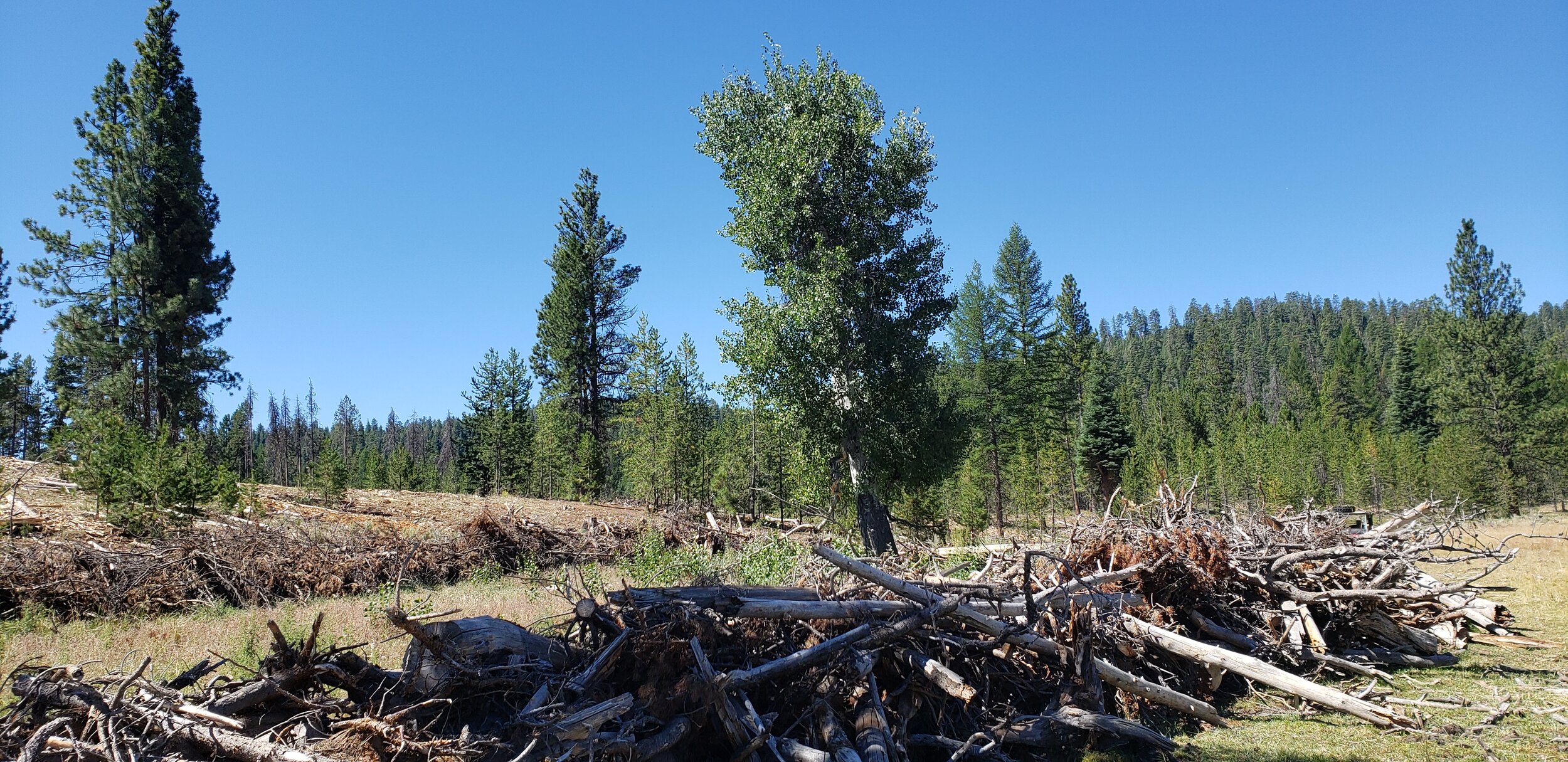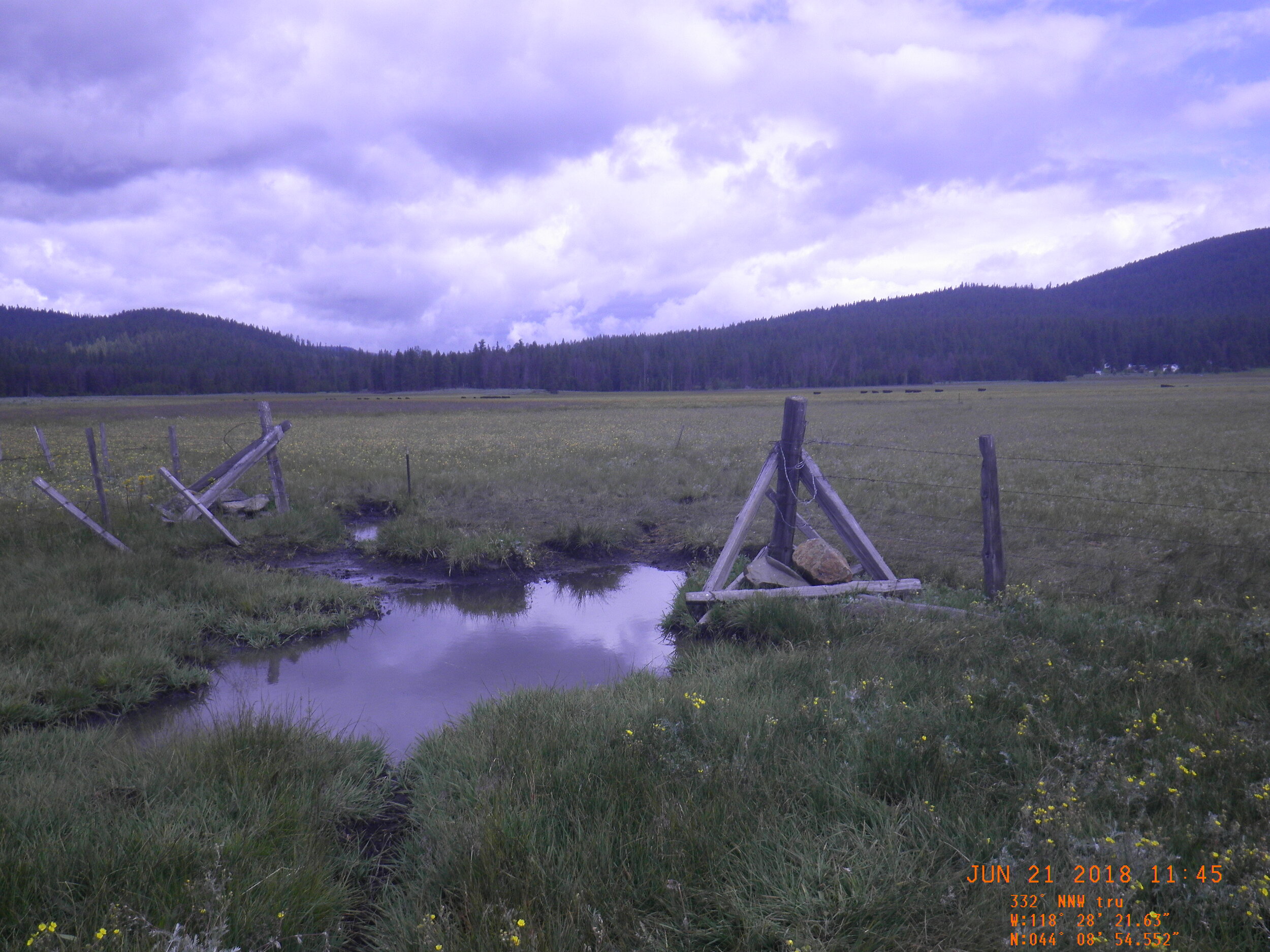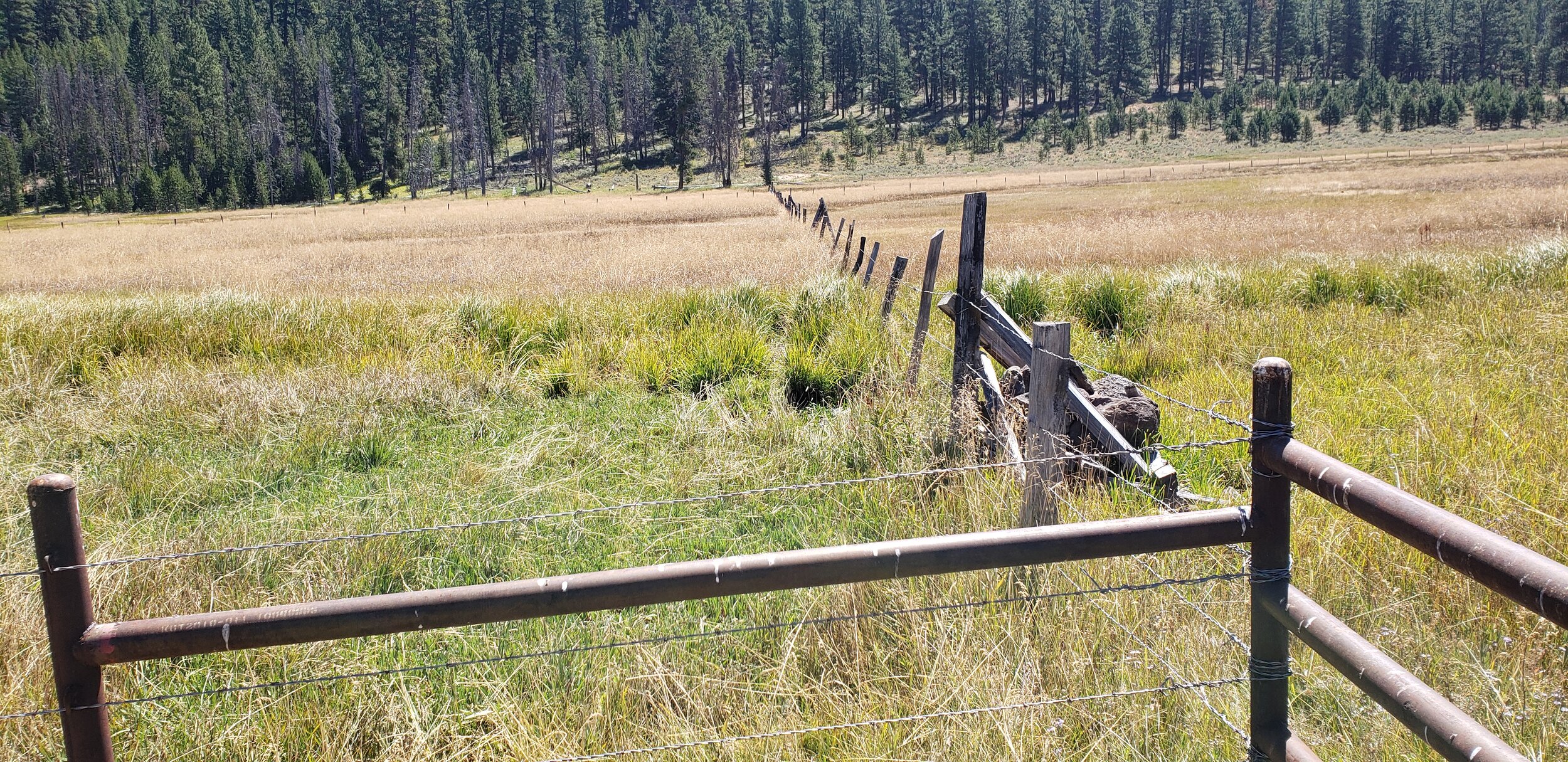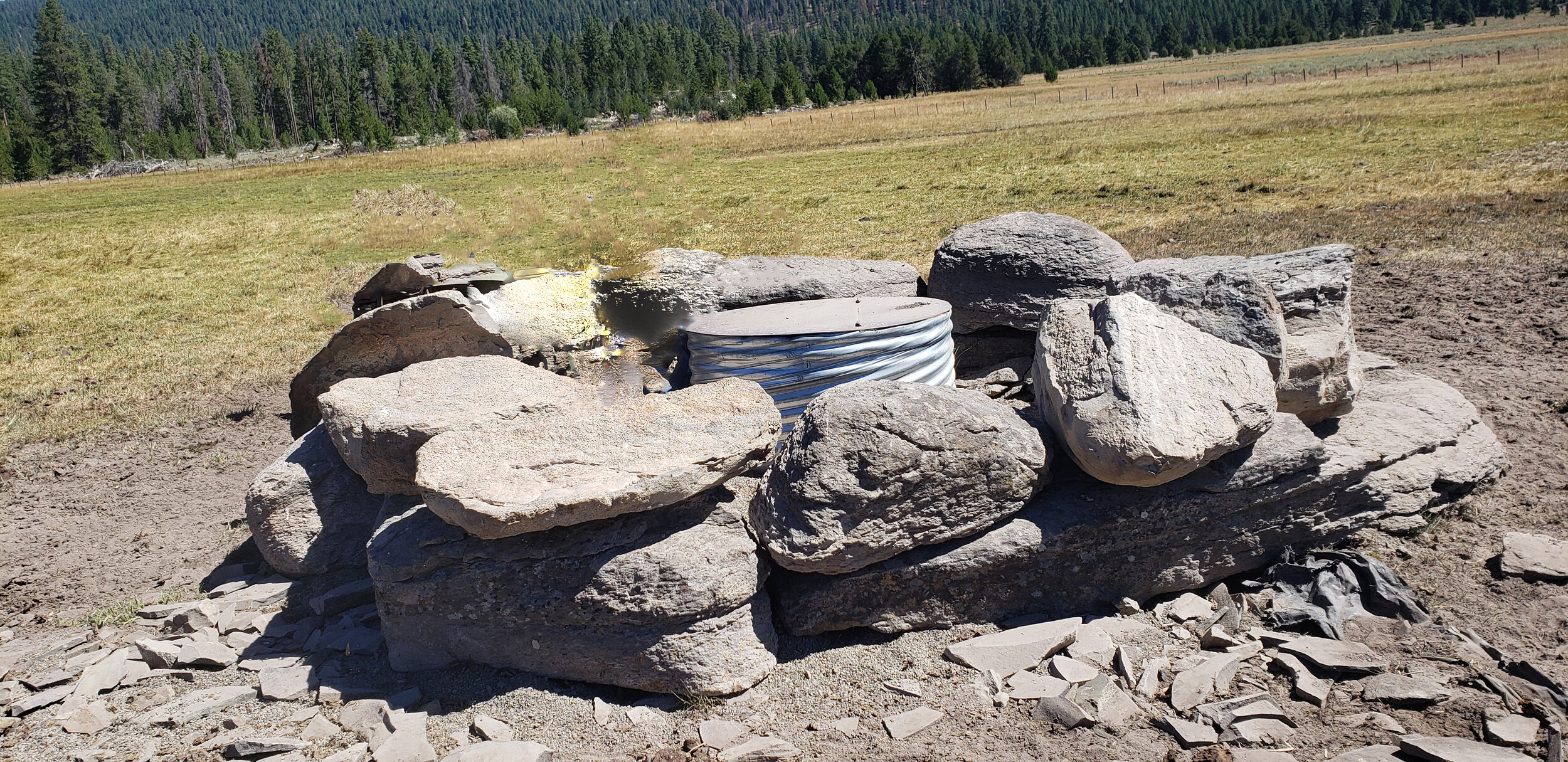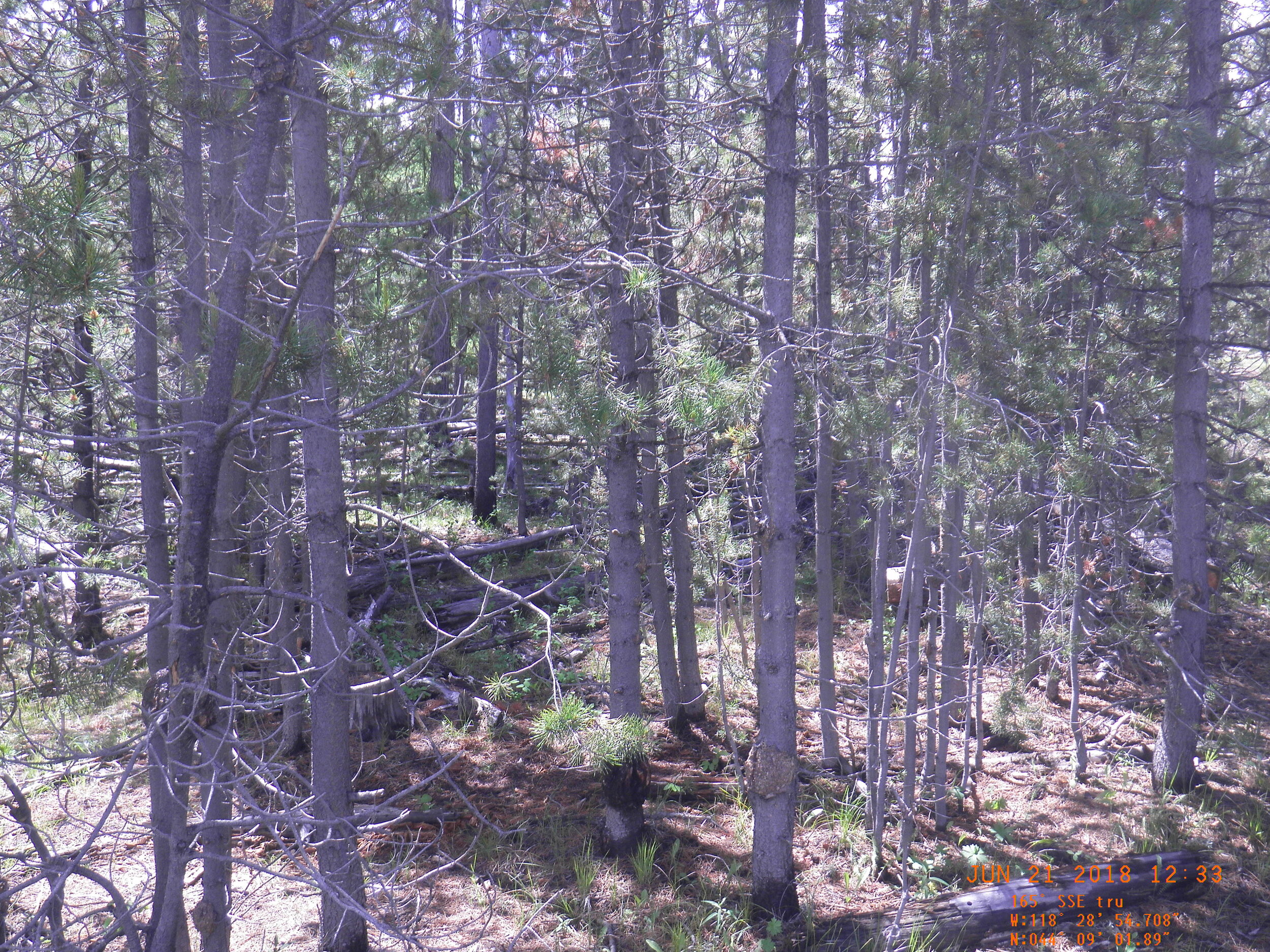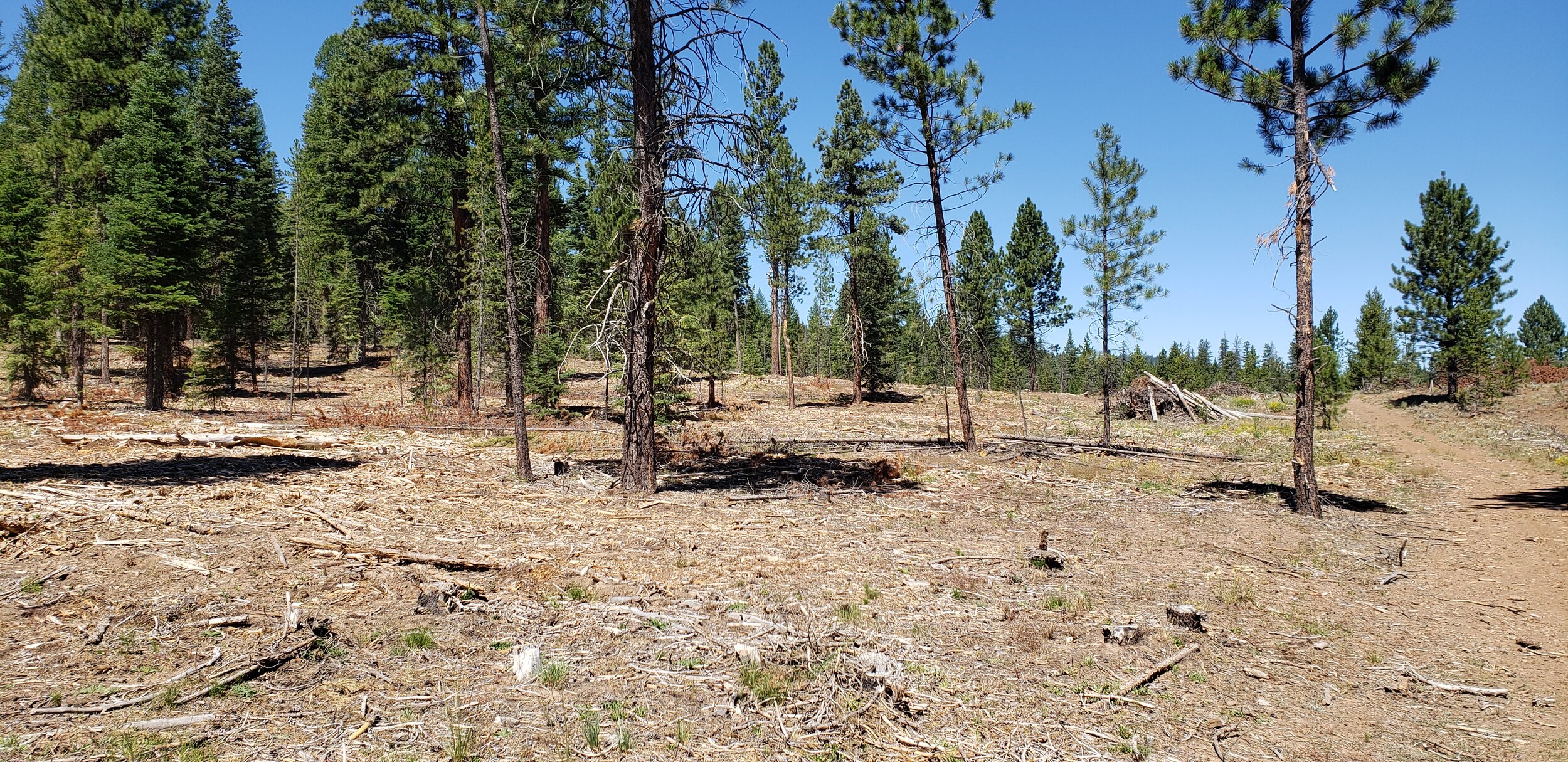Crane Prairie Project
Aspen and riparian areas are both seen as biological hotspots, making them a high priority for restoration and enhancement. The Crane Prairie project created the conditions for aspen stands, the riparian area and surrounding forest to thrive, resulting in a huge win for both the landowner and the land.
The Importance of Aspen
Elk, deer and a variety of birds use aspens for habitat and feed in a unique way. Aspen stands create diversity in the plant community as well. A recent study stated, “Our results strongly support the idea that plant communities of aspen stands are compositionally distinct from adjacent meadows and conifer forest, and that aspen forests are a major contributor to plant species diversity.” Kuhn et al. (2011) Unfortunately, most aspen stands are struggling. According to US Forest Service researchers, the major factors contributing to aspen decline are:
- Shading by and/or competition with other vegetation
- Excessive browsing of aspen suckers by ungulates at specific locations.
- Multiple stressors (e.g., drought, insect/diseases, heavy browsing, compacted soils) influencing an area at the same time.
At the project site, the aspen stands were being overwhelmed by lodgepole pine. There were many suckers, but they are being shaded by invading conifers and grazed down by elk, deer or livestock.
Aspen Protection
To unleash the power of the aspen to regenerate, the landowner cut the conifer and protected the sprouts by building 3,700 feet of buck and pole fence around the largest aspen stand and building a debris fence from the thinning slash around the second aspen stand. The response has been impressive. Aspen are sprouting and growing quickly. There were also scattered aspen throughout 60 acres of heavily stocked pine stands. These stands were thinned in hopes of releasing the aspen. It worked as planned, aspen are sprouting. They found more aspen than thought to be there, and they built debris fence around some of the larger clumps. The debris fence concept has been used successfully in the Burnt River area, and it appears to have worked in this case as well. The owner was enthused by the idea of using slash to build a fence he built one around a clump of aspen he discovered while thinning the forest stands, he plans on building more.
Riparian Enhancement and Grazing Management
Crane Prairie is the headwaters of Crane Creek. The water coalesces into a defined channel on the northeast side of the property. We installed a riparian exclusion fence to protect 1,125 feet of the creek and 6 acres of riparian area.
Because the watering sources were to be fenced off, the first decision to make was where and how to develop the springs for livestock water. There are multiple springs on the property and there appeared to have little to no fall to gravity feed troughs. An accurate survey of the property was needed so we hired RSI Engineering to survey and determine the cheapest, most effective method and the best spring to develop. They conducted a drone survey and recommended using a sump spring development system. They chose the spring closest to the trough locations to minimize cost. About 1,265 of 2-inch pipe was installed 4 feet deep to supply two troughs. The system is operating successfully and the owner is pleased with the performance of the spring development/watering system. The landowner built 5,500 feet of cross fence to split the one large pasture into two north and south pastures. This compliments an existing cross fence. The fencing and troughs allows for a rotational grazing system. There are now options to allow for flexibility in timing of grazing, meeting the needs of the cattle and the meadow.
Forest Health
The forest surrounding the Crane Prairie was densely overstocked with unwanted woody species. Scattered through the dense stand of lodge pole are larger Ponderosa Pine, aspen, and even a few Douglas-firs.
The owner consulted with experienced logging companies and decided a mechanical thinning with mastication of the slash would be the best solution. They thinned out 150 acres of lodgepole and left the best Ponderosa pine and Douglas-fir trees. Some of the bigger lodgepole were left as well. The stands are now at the appropriate density and the slash is almost not apparent. The proposal called for thinning 90 acres, but the owner exceeded that by thinning a total of 150 acres. With the stands properly thinned, these trees will be much healthier, resist insect attacks, provide better wildlife habitat, and the risk of devastating wildfire is greatly reduced.
Project Successes
The project, a collaboration between the Malheur Watershed Council, the Malheur SWCD and the landowner, was implemented without any problems. The owner took initiative and made sure the project met and exceeded specifications and expectations. This project resulted in an enhanced riparian area, protection of the headwaters of an important creek, aspen stands well on their way to thriving, and improved forest health. These ecosystem benefits of this project reach far beyond the borders of the landowner’s property - improving habitat for wildlife, reducing forest fire and disease risk, and benefiting downstream users of Crane Creek.
Project Components:
Developed one spring
Installed 1,265 feet of 2-inch pipe to deliver water to two troughs
Construction of 5,500 feet of cross fencing
Installation of 1,125 feet of riparian exclusion fencing
Construction of 3,700 feet of buck and pole fence to protect an aspen stand
Debris fences made from slash constructed around two aspen stands
Thinning 150 acres of overstocked forests
Slash was masticated
Removed conifers from 60 acres of aspen stands
To get started on a project like this yourself, please visit https://malheurwatershed.org/


